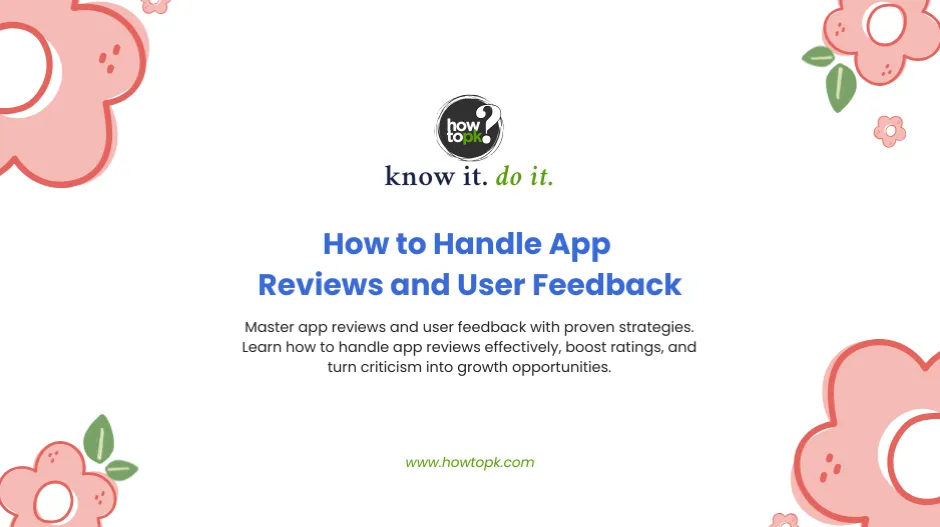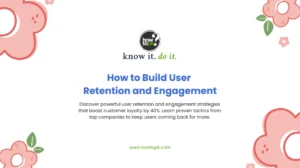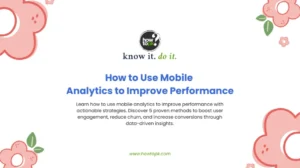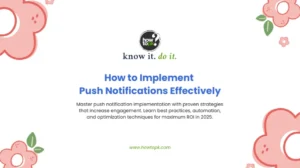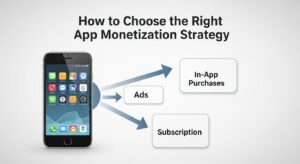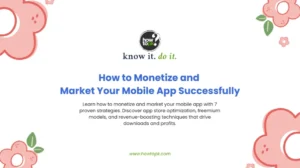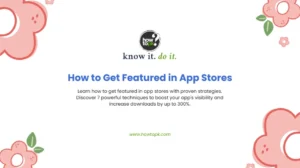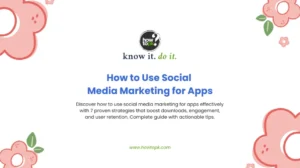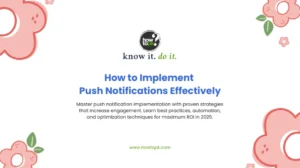When you launch an app into today’s competitive marketplace, you’re essentially opening your digital doors to millions of potential critics and advocates. App reviews and user feedback represent the lifeblood of mobile application success, yet many developers treat them as an afterthought rather than a strategic priority.
Consider this: 90% of users read reviews before downloading an app, and a single negative review can cost you up to 30 potential downloads. The stakes couldn’t be higher, but here’s the empowering truth – mastering the art of handling app reviews transforms criticism into your competitive advantage.
Understanding the App Review Ecosystem
The Psychology Behind User Reviews
Users don’t leave reviews in a vacuum. They’re motivated by emotions – frustration with bugs, delight with features, or urgency to warn others. Understanding these psychological triggers helps you anticipate and address concerns before they escalate into negative app reviews.
Research from BrightLocal shows that 87% of consumers read online reviews for local businesses, and this behavior extends to app downloads. Users seek validation from their peers, making authentic, well-managed app reviews crucial for conversion.
Types of App Reviews You’ll Encounter
Review Type | Characteristics | Response Strategy |
Bug Reports | Specific technical issues | Quick acknowledgment + timeline |
Feature Requests | Suggestions for improvements | Thank + roadmap consideration |
Praise Reviews | Positive user experiences | Amplify and share gratitude |
Comparison Reviews | App vs. competitors | Address unique value proposition |
Emotional Outbursts | Highly charged negative feedback | Empathetic, professional response |
Strategy 1: Proactive Review Management
Setting Up Monitoring Systems
Don’t wait for reviews to pile up. Implement automated monitoring tools that alert you immediately when new app reviews appear. Tools like App Annie and Sensor Tower provide comprehensive review tracking across multiple app stores.
Create a response hierarchy based on review severity:
- Critical bugs: Response within 2 hours
- General complaints: Response within 24 hours
- Positive reviews: Response within 48 hours
- Feature requests: Weekly batch responses
Building a Review Response Template Library
Consistency in your app reviews responses builds trust and demonstrates professionalism. Develop templates for common scenarios while maintaining personalization:
Bug Report Template: “Hi [Username], thank you for bringing this to our attention. We’ve identified the issue and our development team is working on a fix. We expect to release an update within [timeframe]. Please contact us directly at [email] for immediate assistance.”
Strategy 2: Transforming Negative Reviews into Opportunities
The Art of Graceful Problem-Solving
Negative app reviews aren’t failures – they’re free consulting sessions from your users. Each complaint reveals pain points you might have missed during development and testing.
When responding to negative reviews:
- Acknowledge the user’s frustration genuinely
- Take responsibility without making excuses
- Provide a clear solution or timeline
- Invite private communication for complex issues
- Follow up after implementing fixes
Case Study: How Slack Turned Criticism into Innovation
Slack famously used negative app reviews about notification management to develop their “Do Not Disturb” feature. Instead of dismissing complaints, they recognized a pattern and built solutions that became competitive advantages.
Strategy 3: Leveraging Positive Reviews for Growth
Amplification Strategies
Positive app reviews are marketing gold. Share them across your social media channels, incorporate them into your app store screenshots, and use them as testimonials on your website.
Create a systematic approach:
- Screenshot exceptional reviews for social media
- Quote positive feedback in press releases
- Feature user testimonials in your app’s onboarding flow
- Send positive reviews to your development team for motivation
Encouraging More Positive Reviews
Timing is everything when requesting app reviews. Research from Localytics shows that asking for reviews immediately after positive user actions (completing a task, reaching a milestone) increases positive review rates by 300%.
Implement in-app review prompts strategically:
- After successful task completion
- Following positive user interactions
- During high-engagement moments
- Never immediately after app crashes or errors
Strategy 4: Technical Implementation of Review Management
App Store Connect and Google Play Console
Both major app stores provide developer tools for managing app reviews. Apple’s App Store Connect allows developers to respond to reviews directly, while Google Play Console offers more detailed analytics and response capabilities.
Key features to utilize:
- Review sentiment analysis
- Keyword tracking in reviews
- Response templates and automation
- Review trend analysis over time
Third-Party Integration Solutions
Consider integrating review management platforms like Helpshift or Zendesk that can automatically categorize app reviews and route them to appropriate team members based on content analysis.
Strategy 5: Data-Driven Review Analysis
Mining Reviews for Product Insights
Your app reviews contain a treasure trove of product intelligence. Use text analysis tools to identify:
- Most frequently mentioned features
- Common pain points across user segments
- Feature requests with high user demand
- Competitor comparisons and advantages
Metrics That Matter
Track these essential app reviews metrics:
- Overall rating trends
- Review volume changes
- Response time averages
- Sentiment analysis scores
- Conversion rates from reviews to downloads
Strategy 6: Building a Review Response Team
Staffing Considerations
As your app scales, managing app reviews becomes a full-time responsibility. Consider these roles:
- Community Manager: Daily review monitoring and responses
- Product Manager: Feature request evaluation and roadmap integration
- Developer: Technical issue identification and resolution
- Marketing Manager: Positive review amplification and brand messaging
Training Your Team
Establish clear guidelines for app reviews responses:
- Brand voice and tone standards
- Escalation procedures for complex issues
- Legal considerations for public responses
- Cultural sensitivity for global apps
Strategy 7: Long-Term Review Strategy Development
Creating a Review Culture
Transform app reviews management from reactive damage control to proactive user engagement. This cultural shift requires:
- Regular team meetings focused on review insights
- Integration of review feedback into product development cycles
- Celebration of positive review milestones
- Learning from negative review patterns
Measuring Success
Establish KPIs that reflect your app reviews management effectiveness:
- Average app store rating improvement
- Review response time reduction
- Positive review percentage increase
- User retention correlation with review engagement
Advanced Tactics for Review Optimization
Localization and Cultural Considerations
Global apps face unique challenges in app reviews management. Cultural differences affect review behavior, complaint styles, and expectation levels. Research local review customs and adapt your response strategies accordingly.
A/B Testing Review Request Strategies
Test different approaches to requesting app reviews:
- Timing variations (immediate vs. delayed)
- Message wording (direct vs. subtle)
- Visual design of review prompts
- Incentive offerings (appropriate to app store guidelines)
Common Pitfalls to Avoid
- Never Ignore Reviews: Silence communicates indifference to potential users browsing your app reviews. Even a simple acknowledgment shows you’re listening and care about user experience.
- Don’t Take Reviews Personally: Maintain professional objectivity when responding to harsh criticism. Remember that negative app reviews often reflect user frustration with their experience, not personal attacks on your work.
- Avoid Generic Responses: Users can spot copy-paste responses immediately. While templates provide structure, always personalize your app reviews responses with specific references to the user’s feedback.
Future-Proofing Your Review Strategy
Emerging Trends in App Review Management
The landscape of app reviews continues evolving with new technologies and user behaviors:
- AI-powered sentiment analysis becoming more sophisticated
- Voice reviews gaining popularity on certain platforms
- Video reviews increasing in frequency
- Real-time chat integration with review systems
Preparing for Algorithm Changes
App store algorithms increasingly factor user engagement and review quality into ranking decisions. Stay informed about platform updates and adjust your app reviews strategy accordingly.
Conclusion: Your Review Management Action Plan
Mastering app reviews and user feedback requires systematic approach, genuine user focus, and continuous improvement mindset. Start by implementing monitoring systems, develop response templates, and build processes for turning feedback into product improvements.
Every review represents a user who cared enough about your app to share their experience. Whether positive or negative, these app reviews provide invaluable insights into user needs and preferences.
Your next step should be conducting an audit of your current review management practices, identifying gaps, and implementing the strategies outlined in this guide. Begin with the fundamentals – monitoring and responding – then graduate to advanced techniques like sentiment analysis and review-driven product development.
The apps that thrive in today’s competitive marketplace aren’t necessarily those with perfect products, but those that listen, adapt, and demonstrate genuine commitment to user satisfaction through their app reviews management practices.
What specific challenges are you facing with your app’s review management? Which of these strategies aligns best with your current development resources and timeline? Consider starting with one or two approaches and gradually expanding your app reviews management capabilities as you see results and build internal expertise.

